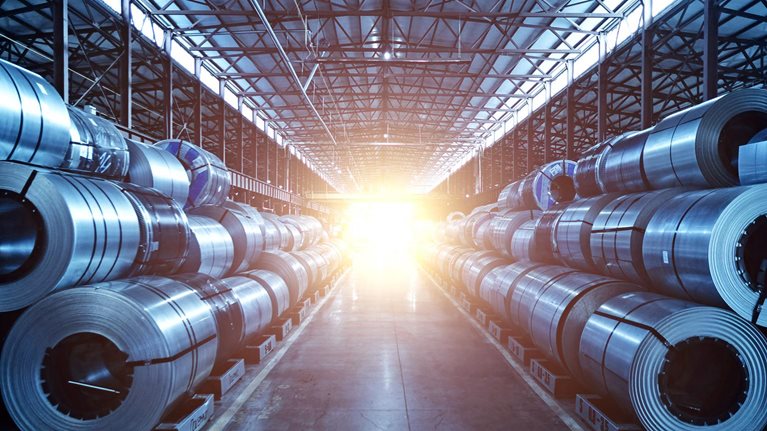As India rises to become the third-largest economy in the world and its consuming class grows, the manufacturing, infrastructure, engineering, real estate, and transportation sectors will continue to drive demand. Steelmakers will have to invest in capacity enhancement and sustainable technologies while being able to procure raw materials such as metallurgical coal (met coal), as well as high-quality iron ore and scrap for low-emission steelmaking technologies.
The global steel industry: Evolving with the times
Global steel consumption is estimated to grow from about 1,764 million metric tons in 2023 to between 1,950 million to 2,000 million metric tons in 2035. As demand stabilizes or decreases in traditional, urbanized markets, it is expected to grow in emerging markets, moving the centers of demand growth.
Three trends are reshaping the push and pull of steel demand and supply:
- Growing thrust on decarbonization prompting a push for green steel: A McKinsey survey of global decision-makers projects demand for green steel will likely grow around 2.5x in the next 5 years.1
- EBITDA pressures: Over the last 7 to 8 quarters, the steel industry has faced margin pressure across the globe. As countries step up exports to address domestic surplus capacity, margin pressures are expected to continue across the world, including in India.
- China’s shifting realities: The country remains the largest steel consumer in the world despite declining domestic demand, which is likely to drop from around 900 million metric tons in 2023 to between 800 to 850 million metric tons by 2035. The decline in demand has not yet led to reduced capacity (despite negative margins), resulting in increased steel exports from China.2
India: The quest for growth and self-reliance
India is a vibrant site for industry, infrastructure, and investment. Economic activity and urbanization are expected to boost demand for steel in India to between 240 million to 260 million metric tons by 2035, a CAGR of around 6 percent from 2023.
At the same time, India’s steel sector accounts for about 12 percent of total greenhouse gas emissions. With much of India’s infrastructure still being built for the future, the steel industry has scope to accelerate decarbonization in the country by lowering emissions in its manufacturing technologies. Actions might include providing an early indication of CO2 emissions related regulations, the rapid development of low carbon intensive technologies for steelmaking, policies for material efficiency (such as scrap-based steelmaking), the use of green steel, and decarbonizing existing assets.
The landscape for metallurgical coal
The global demand for met coal is expected to decline by 2035, from more than 1,037 million metric tons in 2020 to between 850 million to 900 million metric tons by 2035. However, demand for seaborne met coal is expected to grow with the addition of new blast furnace-basic oxygen furnace (BF-BOF) based steel capacities in emerging markets such as India and Southeast Asia.
India is expected to lead the demand for seaborne met coal, growing from 78 million metric tons in 2023 to between 120 million to 130 million metric tons in 2035.3 Given the uncertainty of met coal availability and the continued reliance on BF-BOF-based steelmaking, Indian steelmakers are attempting to secure their coal imports through three avenues: diversifying imports, improving the availability of domestic met coal, and investing in coal mines beyond India for stable supply and minimal price volatility.
The impact of low-emission production on demand for metallics
As decarbonization gradually becomes an intrinsic agenda point for most steel players, global crude steel production is expected to shift from the traditional high-emission BF-BOF route to an electric arc furnace (EAF)-based process (maximizing scrap use and direct reduced iron, or DRI). The latter appears to be the only feasible and most favored option to decarbonize global steelmaking. The share of crude steel from the BF-BOF route is expected to drop from around 70 percent to around 60 percent between 2023 and 2035.
Over time, this shift toward low-emission technologies will likely drive demand for high-quality metallics such as scrap and DRI. As BF-BOF steelmaking is expected to remain the dominant steelmaking technology in the coming years, hot metal will retain the largest share of metallics, but its share of the total metallics mix is expected to decline from around 60 to 65 percent currently to around 50 percent by 2035.
The path ahead for Indian steelmakers
As steelmakers strategize for growth, they should account for the major trends shaping the domestic and global steel industry for future readiness. Regulatory requirements and government policies designed to meet net-zero targets are increasing pressure to decarbonize. This has implications for strategic asset configuration choices and capital spend at a time when profitability and steel trade (exports and imports) are under pressure.
These realities point to three emerging strategic considerations for steelmakers in India: optimizing their portfolio to focus on the most promising end sectors and markets; solving the decarbonization puzzle in a financially sustainable manner; and focusing on operational excellence to ward off margin pressure. Successfully doing so could help India’s steel companies contribute to the country’s economic growth and global leadership.


